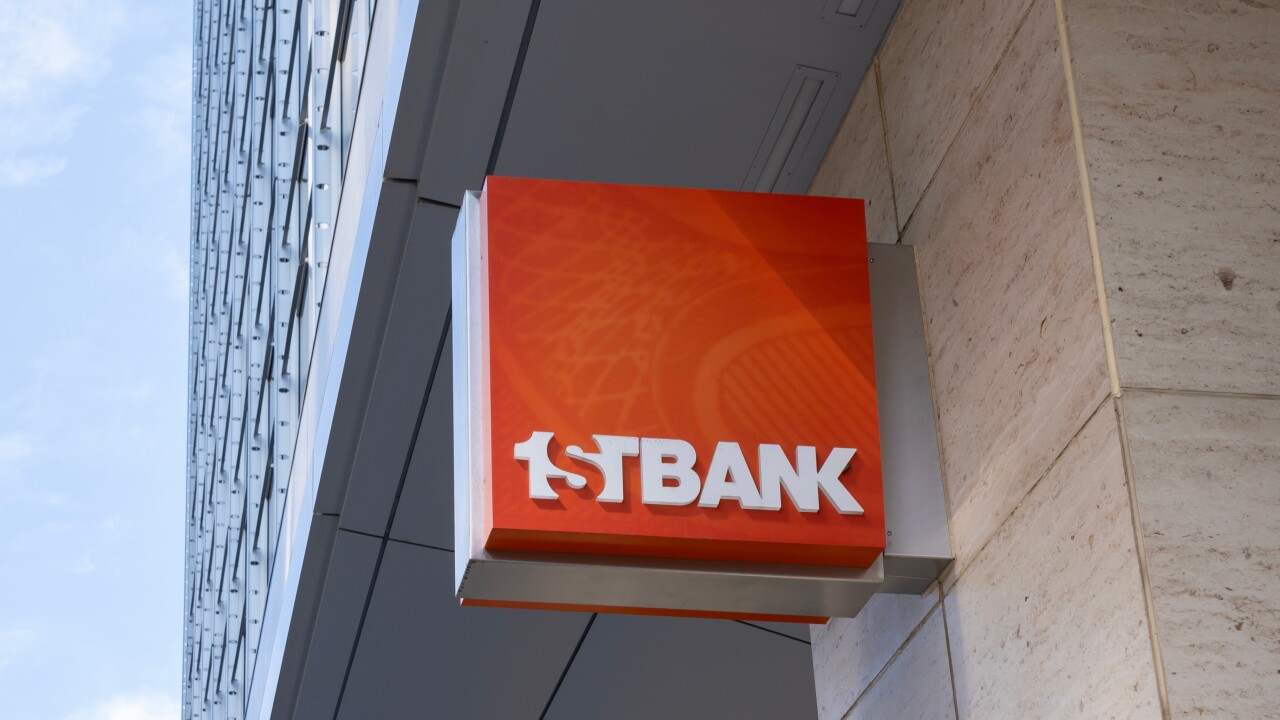CEO Frank Bisignano trumpets a resurgent First Data as the company reportedly preps an IPO, according
Despite improvements and its pursuit of attractive markets, First Data's growth has been lackluster and synergies between portfolio businesses havent been realized.
From 2007 through 2014 the processing titans revenue increased an average of 4.8% per year. During the same period Visa, MasterCard, Amex and Discover US card-purchase volume and transaction annual growth averaged 7.8% and 7.5% respectively.
First Datas signal assets are scale, product breadth and multinational delivery and distribution. With its humongous merchant acquiring and processing business and joint ventures with BofA, Wells Fargo, Citi, Suntrust, PNC, et al, it touches almost half the MasterCard and Visa transactions in the US.
In the 4th quarter, burdened with $20.9 billion in debt it squeaked out its first profitable quarter in 29 quarters since being taken private by KKR in the biggest payments LBO in history. After 7 years of rationalizing data centers, operations and software applications and selling and shuttering noncore businesses, the payments behemoth in 2014 generated a 22.7% traditional EBITDA margin up from 20.8% in the first 9 months of 2007. It was curious, however, discussing first-quarter results management announced a $200 million cost-reduction program, suggesting theres still fat to trim.
With variable revenue and significant fixed costs the processing mammoth enjoys enviable operating leverage.
Its electronic-payments markets enjoy strong secular growth. In mature markets like the U.S. barring another deep recession while tapering, electronic payments will continue to outpace population and GDP growth. If consumers use Apple Pay or Google Wallet instead of a plastic card to pay at the physical point of sale or in the cloud First Data or a competitor also processes it. Cash is still king in most countries providing ample headroom.
In the U.S. the giant processor is trying to sell additional services around payments to merchants.
Its pushing the proprietary Clover platform for revenue and to increase merchants switching costs. While large retailers wont tie themselves to an acquirer through a locked POS system, the payments colossus may control a large enough ecosystem to make it successful with SMEs, which notwithstanding higher origination and servicing costs are more profitable because of richer pricing.
While the U.S. remains its locomotive, to bolster growth First Data needs to expand and deepen its international footprint.
First Data is slightly more international than before the leveraged buyout. Non-U.S. markets accounted for 23.4% of processing and product revenue in the first 9 months of 2007 as a public company and 25% in 2014.
The alluring Chinese card-payments market is the worlds second largest. There are 4.9 billion general-purpose payment cards. POS terminal deployment in 2013 increased 49%. Card-payment growth accelerated from 44% in 2013 to 52% in 2014. And annual per-capita card payments are only 14.5 underscoring the immense opportunity. Unfortunately, despite Chinas commitment to open its domestic card market, its still largely inaccessible for foreign payment networks and processors.
Other large and potentially large markets abroad are more open. The payments giant bolstered beachheads in Brazil and India. Long-term Indias potentially a huge market. Having acquired ICICIs merchant processing business First Datas positioned to participate. And Europe remains a patchwork of national markets where First Data is more pan-European than large traditional local competitors such as Equens, Nets, Worldline, and WorldPay.
If First Data is to be more than simply a portfolio of related payment-processing assets its businesses must be stronger because of their siblings.
Its principal businesses serve both sides of payment networks two-sided markets, processing for card issuers and providing acceptance for merchants and enabling processing. With an enormous processing ecosystem it ought to be able to deliver closed-loop-style benefits enhancing issuer and merchant profitability that its smaller and narrower competitors cant.
Some risks, such as regulatory changes, are outside managements control.
A deep economic slump would have an outsized negative impact on P&L. and if dovish Fed Chairwoman Janet Yellen had a Damascene conversion, became a hawk, and hiked interest rates to mid-nineties levels First Datas debt would become crushing.
New payment systems, such as Bitcoin and M-Pesa, could also take share. Bitcoin evangelists envision the decentralized cryptocurrency replacing retail-payment and money-transfer networks and fiat currencies. A faster-ACH-based system providing its own acceptance would menace. But, building new retail-payment systems in well-served markets is enormously difficult. Consumers and merchants are conservative in their payment habits and established retail-payment networks have enviable defensive moats.
Ultimately, First Data will likely be the largest payments IPO since Visas in 2008 and with a growth story ought to command a higher valuation multiple than its processing peers.
With a more modest debt load and public acquisition currency, it should focus on growth and making the whole greater than the sum of the parts.
Eric Grover is a principal at Intrepid Ventures.





